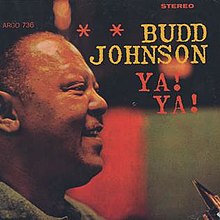
Daily Dose Of Jazz…
Budd Johnson was born Albert J. Johnson III on December 14, 1910 in Dallas, Texas. He initially played drums and piano before switching to tenor saxophone. In the 1920s he performed in Texas and parts of the Midwest, working with Jesse Stone among others.
Making his recording debut while working with Louis Armstrong’s band from 1932 to 1933, he is more known for his work, over many years, with Earl Hines. He was an early figure in the bebop era, doing sessions with Coleman Hawkins in 1944. The 1950s saw Budd leading his own group and doing session work for Atlantic Records, being the featured tenor saxophone soloist on Ruth Brown’s hit Teardrops From My Eyes.
In the mid-1960s he began working and recording again with Hines. His association with Hines is his longest lasting and most significant. In 1975 he began working with the New York Jazz Repertory Orchestra. In 1993 he was inducted into the Big Band and Jazz Hall of Fame.
Throughout his career, he recorded ten albums as a leader and played and recorded thirty~two albums as a sideman with among others, Cannonball Adderley, Ben Webster, Benny Goodman, Big Joe Turner, Dizzy Gillespie, Carmen McRae, Bud Powell, Carrie Smith, Duke Ellington, Quincy Jones, Count Basie, Roy Eldridge, Claude Hopkins, Etta Jones, Jimmy Smith, Randy Weston, Gil Evans, and Billie Holiday.
Tenor and soprano saxophonist and clarinetist Budd Johnson passed away of a heart attack on October 20, 1984 at the age of 73 in Kansas City, Missouri.
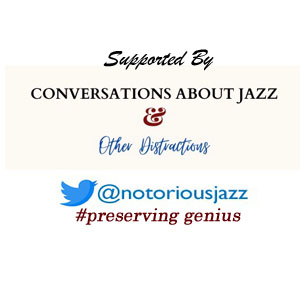
More Posts: bandleader,clarinet,history,instrumental,jazz,music,saxophone
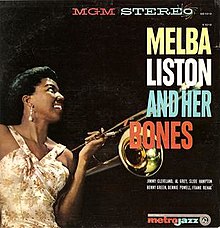
Daily Dose Of Jazz…
Francis Dunlop was born on December 6, 1928 in Buffalo, New York and began playing guitar at age nine and drums at ten. He was playing professionally by age 16 and received some classical education in percussion. He toured with Big Jay McNeely and recorded with Moe Koffman in 1950 before serving in the Army during the Korean War.
After his discharge, Frankie played with Sonny Stitt, Charles Mingus, Sonny Rollins, Maynard Ferguson, Lena Horne, Duke Ellington, and Thelonious Monk. It is his recordings with the latter two that he is principally remembered. Later in his life, he recorded with Lionel Hampton, Earl Hines, Ray Crawford, and Joe Zawinul.
In 1984, he retired, having recorded on over 100 albums with Wilbur Ware, Randy Weston, Melba Liston, Martin Mull, Dodo Greene, Herman Foster, Bill Barron, Richard Davis, Mose Allison and Leo Wright among many others. Drummer Frankie Dunlop passed away on July 7, 2014.

More Posts: drums,history,instrumental,jazz,music
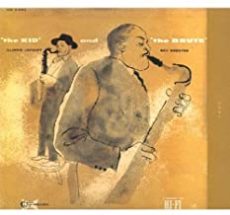
Daily Dose Of Jazz…
Albert Bennington Lucas was born on November 16, 1912 in Brantford, Ontario, Canada and took piano lessons as a child from his mother, Francis Bradley Lucas, a concert pianist. By the age of twelve, he had switched to bass and tuba. After his move to New York City in 1933, he played with Kaiser Marshall before joining the Royal Sunset Orchestra, where he played until 1942.
During the 1940s Albert appeared on record with Hot Lips Page, Coleman Hawkins, Eddie Heywood, Duke Ellington, Mary Lou Williams, James P. Johnson, J.J. Johnson, Ben Webster, Erroll Garner, and Eddie South.
Throughout his career he toured and recorded with Illinois Jacquet from 1947–53, recording in Detroit with Jacquet’s all-star band which included Sonny Stitt, Leo Parker, Sir Charles Thompson, Maurice Simon and Shadow Wilson before returning to play with Heywood again from 1954–56. He also recorded in the 1950s with Ruby Braff, Charlie Byrd, Teddy Wilson, Bill Doggett, Dexter Gordon, Oliver Nelson.
Working primarily as a studio musician in his last two decades, backing up groups at Apollo Theater performances, he played jazz only occasionally. Double-bassist Albert Lucas passed away on June 19, 1983, in New York City.
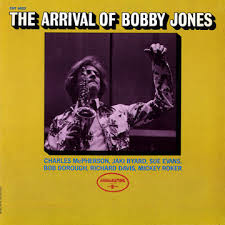
Daily Dose Of Jazz…
Bobby Jones was born on October 30, 1928 in Louisville, Kentucky and played drums as a child, starting on clarinet at age 8. His father encouraged him to explore jazz and
From 1949 into the mid-1950s he played with Ray McKinley, and then with Hal McIntyre before rejoining McKinley later in the decade. During a stint in the Army, he met Nat and Cannonball Adderley as well as Junior Mance. After getting his discharge, he played country music and rock & roll as a studio musician and did time with Boots Randolph and Glenn Miller before returning again with McKinley from 1959 to 1963.
Briefly playing with Woody Herman and Jack Teagarden in 1963, after the latter’s death, Bobby retired to Louisville and started a local jazz council and taught at Kentucky State College. In 1969 he moved to New York City and from 1970 to 1972 played with Charles Mingus, touring Europe and Japan with him. He also recorded sessions under his own name in 1972 and 1974.
Late in life saw him moving to Munich, Germany, where he ceased performing due to emphysema. Over the course of his career, he only recorded two albums as a leader, 15 as a sideman ~ 8 with Mingus and seven with Bill Cosby, Glen Miller, Woody Herman, Jimmy Raney, Willie Thomas and Bunky Green. Saxophonist Bobby Jones passed away on March 6, 1980 in Munich, Germany.
More Posts: bandleader,history instrumental,jazz,music,saxophone
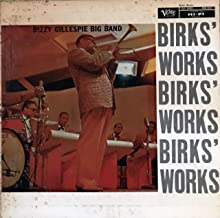
Daily Dose Of Jazz…
James Theodore Powell was born on October 24, 1914. He played on two recording dates with Billie Holiday for Columbia Records, the first in 1940, was with a band comprising of trumpeter Roy Eldridge, alto saxophonists Carl Frye and Powell, tenor saxophonist Kermit Scott, pianist Sonny White, guitarist Lawrence Lucie, bassist John Williams, and Hal West on drums. The second recording session was in 1941, again with Eldridge, Lester Boone, Ernie Powell, and Jimmy Powell on alto saxophones, Eddie Heywood on piano, Paul Chapman on guitar, Grachan Moncur on bass, and drummer Herbert Cowans.
1944 had Jimmy recording with Billy Eckstine and His Orchestra, with Oscar Pettiford, Art Blakey, Dexter Gordon, Gene Ammons, Thomas Crump, Wardell Gray, Dizzy Gillespie, Chippy Outcalt, and Trummie Young, among others. The album was released in 1960 as Mr. B. In 1945, he recorded in New York with Don Byas and Hal Singer.
At the beginning of 1947, Powell was with Illinois Jacquet and his Orchestra, which featured Miles Davis, Marion Hazel, Fats Navarro and Joe Newman on trumpets, Gus Chapwell, Ted Kelly, Eli Robinson and Dickie Wells on trombones, Ray Perry and Powell on alto saxes, Jacquet and Big Nick Nicholas on tenor saxes, Leo Parker on baritone sax, Bill Doggett and Leonard Feather on piano, Al Lucas on bass and Shadow Wilson on drums, together with Tadd Dameron and Jimmy Mundi as arrangers. And again, in April the same year, with a slightly different line-up, this time featuring Russell Jacquet, Navarro and Newman on trumpets, J.J. Johnson on trombone, Powell or Ray Perry on alto, Illinois Jacquet on tenor, Leo Parker on baritone, Sir Charles Thompson on piano, Freddie Green on guitar, Al Lucas on bass and Shadow Wilson on drums.
In 1956, Powell was a member of the Dizzy Gillespie Big Band that recorded Groovin’ High live at Birdland with Walter Bishop on piano, Nelson Boyd on bass, Marty Flax on baritone, Gillespie, Quincy Jones, Carl Warwick and Joe Gordon on trumpets, Benny Golson and Ernie Wilkins on tenor, Ernie Henry and Phil Woods on alto saxes, Roy Levitt and Melba Liston on trombones. He went on to record several albums with Gillespie.
Alto saxophonist Jimmy Powell, who never recorded as a leader but as a sideman was part of nine recording sessions, passed away on February 16, 1994.
More Posts: history,instrumental,jazz,music,saxophone



